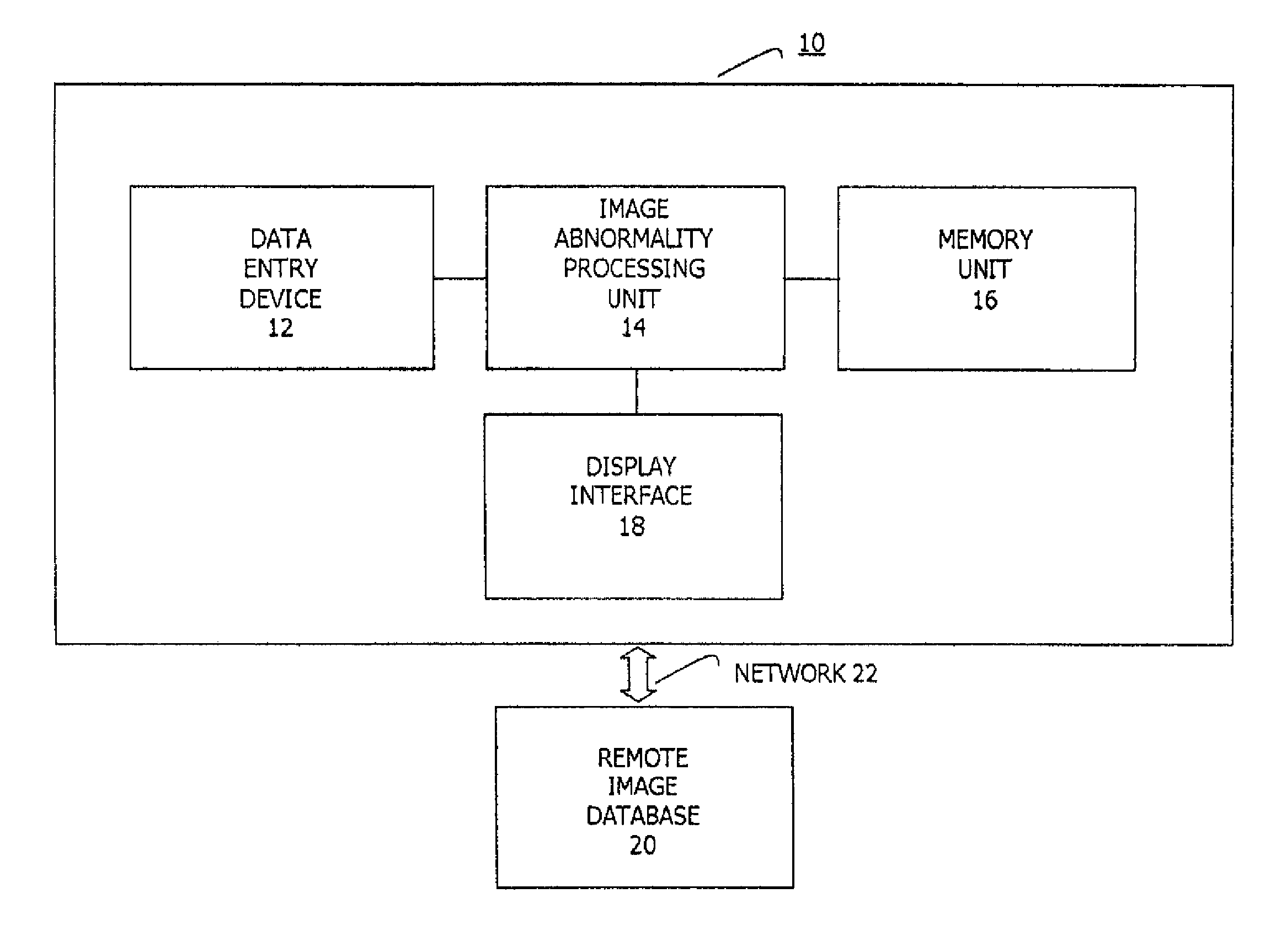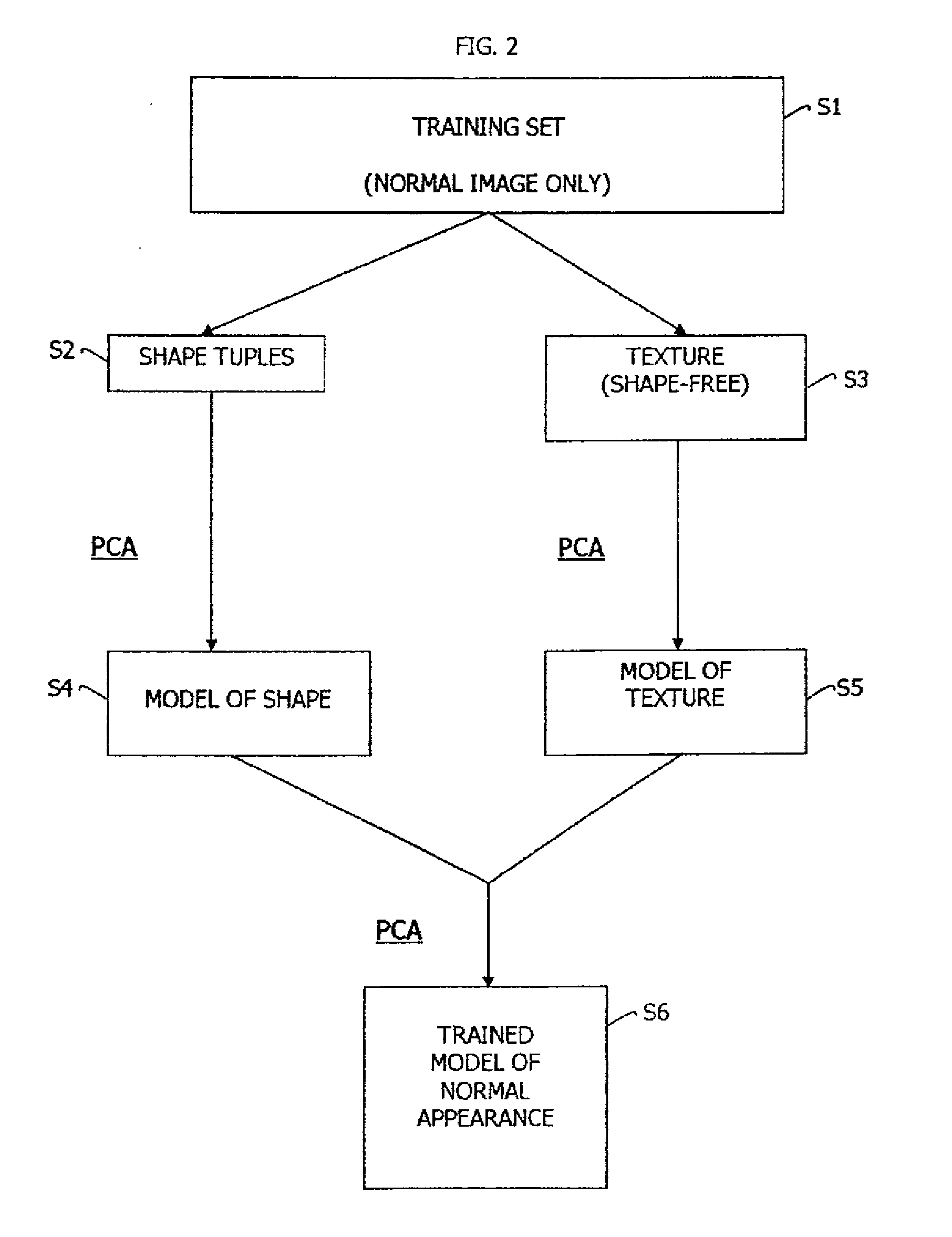Identifying image abnormalities using an appearance model
an appearance model and image technology, applied in image analysis, image enhancement, instruments, etc., can solve the problems of residual image errors representing potential abnormalities, appearance model cannot synthesize abnormal structures which show up,
- Summary
- Abstract
- Description
- Claims
- Application Information
AI Technical Summary
Benefits of technology
Problems solved by technology
Method used
Image
Examples
Embodiment Construction
[0015]FIG. 1 is a schematic block diagram of an abnormality identification system 10 in accordance with the claimed invention. The abnormality identification system 10 preferably includes a data entry device 12 through which data is entered into the system, an image abnormality processing unit 14 that processes data received from the data entry device 12, a memory unit 16 that stores data and / or executable instructions for the image abnormality processing unit 14, and a display interface 18 that displays results to a user of the system. The data entry device 12 includes any desired type or combination of types of data entry devices, for example, magnetic media interface devices, optical media interface devices, hard-wired communication ports, wireless communication ports, etc., to permit data to be received and entered into the abnormality identification system 10. The image abnormality processing unit 14 includes any desired type or combination of types of data processing devices, ...
PUM
 Login to View More
Login to View More Abstract
Description
Claims
Application Information
 Login to View More
Login to View More - R&D
- Intellectual Property
- Life Sciences
- Materials
- Tech Scout
- Unparalleled Data Quality
- Higher Quality Content
- 60% Fewer Hallucinations
Browse by: Latest US Patents, China's latest patents, Technical Efficacy Thesaurus, Application Domain, Technology Topic, Popular Technical Reports.
© 2025 PatSnap. All rights reserved.Legal|Privacy policy|Modern Slavery Act Transparency Statement|Sitemap|About US| Contact US: help@patsnap.com



